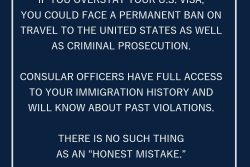Business and Economic Commentary by Christopher Ram Part 17
Introduction
A transactional electorate has overwhelmingly voted to return to the presidency in the United States of America a convicted felon, a misogynist, a businessman who owes his success to scamming, the exploitation of the tax and bankruptcy laws of that country, and a man who has been ordered by the courts to pay millions for sexual assault. And just a small bit of irony – he will be sworn in at the same place where he led an insurrection four years earlier.
For contrasting reasons, Trump’s re-election is particularly significant for Guyana and the rest of the world – north and south, democratic and unfree, rich and poor, large and small. Trump befriends and admires Russia’s Putin, North Korea’s Kim Jong Un and Hungary’s strongman Victor Orban while calling the leaders of his domestic Democratic rivals “enemies from within,” threatening to let loose the Justice Department to deal with them. I have always treated the moniker of America as the “greatest country on earth” with grave doubts, but certainly that would not now earn a place on a late-night comedy show.
Trump 1
Trump was first elected President in 2016 when Guyana had only just had a few oil discoveries under David Granger, and it was in the twilight of Trump 1 that the USA intervened to impose clarity and democracy in Guyana by bringing Granger to his senses and ushering in the Ali Administration. Now, with Trump 2 only a matter of months away, Guyana faces the prospects and challenges from a dramatically different position than during his first term.
In 2016, Caribbean analysts warned of increased protectionism, reduced development assistance, and challenges to correspondent banking relationships – predictions that largely materialised. This time around, as a not insignificant oil producer, Guyana must navigate these renewed challenges with ExxonMobil’s role as an extension of US foreign policy in our midst and playing an outsize, dominant role in Guyana’s economy, politics and society.
Trump’s promised trade policies – including a 20% tariff on all imports and 60% on Chinese goods – echo the protectionist stance that characterised his first presidency. Oil is Guyana’s biggest export to the USA, and it would be interesting to see whether Exxon’s and Hess’ oil imports in the USA will escape Trump’s tariffs. It would be the greatest irony if the US’s IRS allows Exxon and Hess to claim a credit for taxes which we in Guyana pay but imposes Trump’s tariff on their imports of Guyana oil into the USA. While the Stabroek Block is Exxon’s and Hess’ Kohinoor (jewel in their crown), Trump might want to promote America’s oil production over imports.
Oil
But Guyana exports to the USA is more than oil. Caught in any genaralised tariffs could be agricultural produce, seafoods and gold. If Exxon and Hess face any pushback in the US from their Guyana production, they will play hardball with Guyana to prevent any setbacks to their good fortune. As I expressed in 143 of the Oil and Gas column this past Friday, their resistance to renegotiation of the 2016 Agreement will be even greater than it is today.
But however oil is dealt with as a tariff issue, the impact of Trump 2 on oil price is even more certain and consequential. Already we have seen the fall in price with expectations of further reductions over the next year. If there is the easing of geopolitical risks, the ending of the Russian – Ukrainian war, Israel’s declaration of victory and its war aims, prices can really tumble with grave implications for the budget. These are real prospects and the backdrop to Government’s announcement of its intention to seek a supplementary budget for the $60 Bn or more to pay the $100,000 cash grant to all Guyanese. No time for explaining that there are two sides to a budget – the expenditure authorisation side and the funding side. We are still to be told where the money will come from, or its impact on inflation and the exchange rate. But that is an aside.
Trump 2
Trump is likely to pull out from the Paris Accord (again) heightening the risk of accelerated global warming with direct, catastrophic consequences to low-lying countries like Guyana. The change from the Trump 1 era to Trump 2 era is that Guyana has moved up in the league to being a rich country to which development assistance might no longer be available.
There must be tens of thousands of Guyanese caught in the deportation drive. That will pose a huge housing, economic and social challenge to the Guyana economy and society even as we seek to accommodate and adapt to the huge influx of Venezuelans in Guyana. It is unclear how prepared Guyana is, but I worked with Joe Harmon in an NGO providing assistance for compulsory returnees and am aware of the huge challenges which arise.
Responding to Trumpism
The lessons from Trump’s first term show that reliance on a single market or sector creates dangerous vulnerabilities. The Ali Administration has itself become trapped by the Dutch Disease even as we hear of job losses in the oil sector, the outsourcing sector and even a prominent bakery, all on top of the destruction to our village economies with the proliferation of Chinese businesses in every corner of the country.
While oil dominates our current economic discourse, we must strengthen the existing sectors and create the conditions for the diversification into a robust, resilient economy. This is not a job task for the Government alone and it is sad to see how little the major private sector companies contribute to import substitution, let alone exports. Nand Persaud in rice best serves Guyana and while GuySuCo produces some sugar, the cost of maintaining the Corporation is prohibitive and possibly unsustainable. So much on the shelves from the supermarkets – including water, for Pete’s sake – is imported, as are chicken, eggs, fish, beef and pork, vegetables etc.
ONE GUYANA is a good political slogan. Let us paraphrase Trump and make PUT GUYANA FIRST our economic motto.









